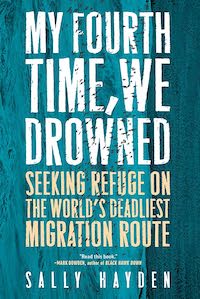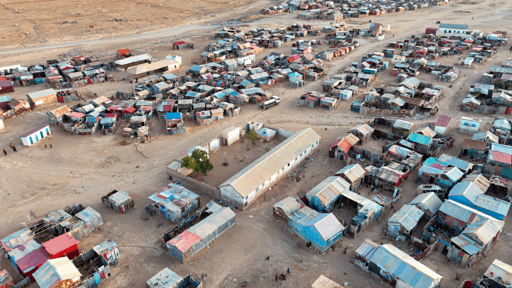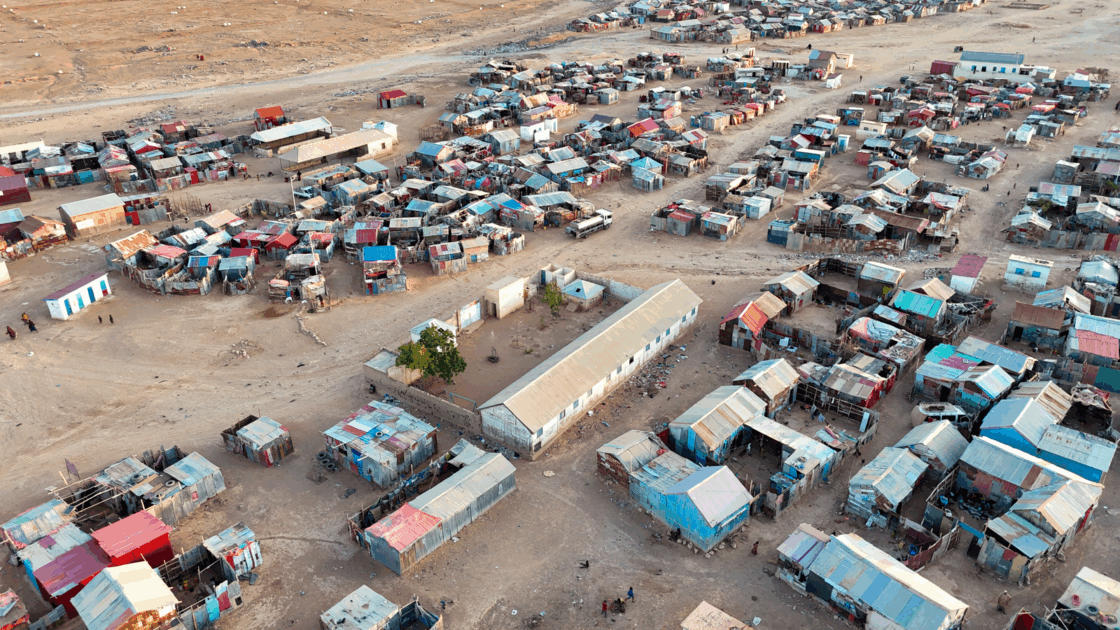Photograph Source: Omar Gadood – CC BY-SA 4.0
Introduction
Irish Journalist Sally Hayden investigates the impacts related to capital and how it marginalizes migrant populations within the international order. In My Fourth Time, We Drowned, she talks about how the chaotic politics of migration are virtually contracted out by unaccountable actors (IGOs), thereby showing neoliberalism’s reach. Social media allowed Hayden to learn of Libya’s unspeakable secretive warehouses filled with detainees and all with the European Union’s help. She reminds the reader that the Central Mediterranean Route (CMR) is the most dangerous migration path in the world.
It is Western policy, without excusing North African culpability, that advances hard and soft power over human rights, she argues. Her end-times style journalism focusing on environmental degradation and forced migration confirms how historical Fortress Europe still exports imperialism when the capitalist interests of sovereignty are at stake.
Howard Zinn believed that migration was often a response to injustice and caused by powerful actors. He rejected borders and forces that harmed human dignity stating, “No Human Being is Illegal.” Hayden also describes a system as alarming as anything happening inside Trump’s “Alligator Alcatraz,” a jail built not only to detain but to illegally hold and disappear migrants.
Her story illustrates a “human rights disaster of epic proportions.” In this investigative work, she spoke to “hundreds of refugees and documented their desperate flight to safety and the horrific conditions that ensued.” The book is noteworthy for its meticulous research and contains over 50 pages of endnotes. Foreign Policy’s Rhoda Feng called it “a harrowing chronicle of the experiences of many refugees fleeing dictatorships and violence” and called Hayden’s work “a one-woman fact-finding mission.” According to Hayden, these were all newsworthy events that were tremendously overshadowed by Ukraine.
She starts with a quote by a Somali refugee now in Europe that references the title: “I was caught by the Libyan coastguard three times – first time from Qarabully, east Tripoli; second time, Zawiya; third time, Zuwara. And my fourth time, we drowned. Further, Hayden cites Sophie Scholl, (1921-1943) the anti-Nazi political activist who once stated, “the real damage is done by those millions who want to ‘survive’ and just want to be left in peace.” Scholl was a member of Weiße Rose and criticized the complacency of individuals. Hayden does the same when it comes to institutions stuck on a default setting in support of violent global capitalism.
Context
In the beginning of the book, Hayden recounts the distressing Facebook message she received from a refugee trapped in a Libyan detention center, returned with EU funding: “If there is any United Nations Refugee Agency or human rights organizations near you, contact them. Since yesterday we haven’t eaten any food.” She likened the human rights abuses of detainees to Appellplatz, the early morning roll calls once used in concentration camps. She is further appalled that 70 years since the refugee system was created, people are still imprisoned for seeking asylum.
Hayden points out how, “we are locking people up for trying to seek safety.” Detainees had regularly been taken from the detention center and forced to work like slaves in the homes of wealthy Libyans, she outlines. 6,000 people were being held indefinitely in more than twenty so-called official migrant detention centers in Libya. From 2017 to 2022, more than 100,000 men, women, and children were captured at sea and essentially abandoned by intergovernmental organizations.
In short, Hayden wrote this book to document the high moral costs of European migration policy starting with the West’s blameworthiness and indifference to “hellish” conditions. She stated in Chapter Seven’s “Disunited Nations,” “as a journalist, my job is to elevate voices that may be overlooked while making efforts to hold powerful individuals, organizations, and governments accountable.”
History
In 2015, the EU started the Trust Fund for Africa, a multibillion sum of money meant to halt migration to Europe. Then in 2017, the author explains how Italy signed a Memorandum of Understanding (MoU) with Libya which started western collusion with the Coast Guard “to stem the influx of illegal migrants.” Then came the live reporting, protests and objections by charities, human rights organizations, and Italy’s three leading trade unions. The EU also pledged, Hayden asserted, “a sum of almost €100 million towards training and equipping the Coast Guard over the next few years.”
In August and September of 2018, inter-militia war broke out in Tripoli and in October 2018 “a Somali refugee set himself on fire and died of his injuries.” Following the October-November 2018 tuberculosis outbreak at the same facility in Triq al Sikka, Hayden references the 2019 protest that resulted in over twenty people taken underground and tortured.
She observes that later in 2019, “the EU declared the migration crisis ‘over’ ahead of parliamentary elections and then ceased sea rescue patrols in the Central Mediterranean completely.” “They continued,” she writes, “to fly planes and helicopters to spot refugee boats and direct the LCG.” Hayden also analyzes the June 2019 interagency United Nations Envoy visit to a Zintan detention center, a rarity that confirmed the death of twenty-two detainees. When 2020 rolled around, the United Nations International Organization for Migration (IOM) reported that the death toll in the Mediterranean Sea had surpassed 20,000 since 2014, according to the author.
Subsequently, the EU passed a resolution to state Black Lives Matter in reaction to the murder of George Floyd and by July 2020, Pope Francis had compared the Libyan migrant facilities to concentration camps. Further, Hayden reveals the Fall 2021 fact-finding mission commissioned by the United Nations Human Rights Council and how it showed “reasonable grounds to believe that acts of murder, enslavement, torture, imprisonment, rape, persecution, and other inhumane acts committed were against migrants in Libya.” These amounted to crimes against humanity.
The International Criminal Court prosecutor Karim Khan stated that his office made a preliminary examination of war crimes including: “arbitrary detention, unlawful killing, enforced disappearance, torture, sexual and GBV (gender based violence), abduction for ransom, extortion, and forced labor against migrants and refugees in Libya,” in the Spring of 2021. Fabrice Leggeri, the head of the EU Border Agency Frontex, stepped down “amid criticism about the agency’s human rights record.”
The author then tracked the number of migrants arriving by sea to Italy. It varied dramatically. Over eight years, with fluctuating sea arrivals to Western Europe from 2014 to 2022, she indicated how the data reflected the LCG’s increased measures to intercept boats attempting to leave for Europe. Hayden cited the number of people intercepted or rescued in 2017, 2018, 2019, 2021, and 2022 respectively. She also researched the “percentage of people who died attempting to cross the Central Mediterranean” as well as the “number of people who have drowned or gone missing.”
Case Studies
Case studies, detention centers, and source material, all brought out Hayden’s ability to make keen and appropriate literary references. She quoted “Aedh Wishes for the Cloths of Heaven,” from W.B. Yeats’s The Wind Among the Reeds stating, “I, being poor, have only my dreams; I have spread my dreams under your feet; tread softly because you tread on my dreams.” This quote is emblematic of Kaleb, the teenager from Eritrea who after ten hours at sea, squatted in the middle of an overloaded rubber boat and prayed for help. She writes of “the deadly gatekeepers” in rough uniforms that sped toward him. He had put everything on the line to flee yet his dreams were not realized. The author describes the aerial surveillance capabilities and even worse, the betrayal of Kaleb’s search for human security.
Kaleb’s interception (he is named “Essey” in the Dutch, Polish and Spanish translations of the book), represented an even greater collapse. His small country of about six million was often called the “North Korea of Africa” by Western media. Its revolutionary past, with freedom fighters known as tegadelti (“the fighters”) singing of democracy while living in trenches during the 30-year war of independence (1961-1991), has given way to authoritarianism along with a Freedom House score of 3/100.
In 2016, a UN inquiry concluded that crimes against humanity were being committed “in a widespread and systematic manner.” The chair of the inquiry, Mike Smith, noted that Eritrea lacked: 1) an independent judiciary 2) a National Assembly and 3) democratic institutions.
The author also referenced works like I Didn’t Do It For You, a BBC piece by Samuel Ghebrehiwet and Frontline’s Escaping Eritrea, to highlight the severity of political repression. Hayden’s interest in Eritrea actually dated back to 2016, while she reported for Vice. There she began to piece together how the region’s body politic exploited individual lives. “It felt like a place far from politics, though I found out later that the Ethiopian government was forcibly relocating people from their villages as part of efforts to improve conservation and increased tourism,” she noted.
While Ethiopia and Eritrea were distinct, she said, they shared deep cultural roots. Both are home to habeshas, original highlanders who now share traditional borderland culture, yet for Kaleb, the distinction mattered. He was Eritrean but wanted to have an identity respected in Ethiopia. “By 2018 the UN would say half a million Eritreans had fled their own country, 1/10th of its population,” she advanced. Hayden talked about how at this point Libya was already known to be the home of the 21st century slave trade. In 2017, months after Kaleb arrived, then chief prosecutor at the International Criminal Court, Fatou Bensouda, urged for international cooperation.
Further, Hayden discusses how Eritrean refugees trapped in Libya relied on the informal hawala system to send and receive money for survival. Many were forced to make “distress calls,” or pleas migrants make to family members or activists. One person phoned Meron Estefanos, a prominent Eritrean-Swedish activist and journalist whose work has brought international attention to the problems refugees face.
Detention Facilities
The book’s primary sources of news articles, Twitter posts, interviews, photos and IGO/NGO reports, focused on stories of individuals and painted a gruesome picture of slave trafficking rings. “Across Ethiopia, Eritrea, Somalia, and Sudan, there were families making public appeals, pleading with richer relatives, or going to markets and churches to beg for help so they could secure release,” she explains. In 2020, one of the forty-five people she discovered to drown in the Mediterranean was Sudanese writer Abdel Wahab Mohamed.
Her report on the suicide of a Somali man in the Libyan detention center was crushing and not widely read. Hayden wrote of the self-immolation in 2018 in Tripoli because it marked desperation, as detainees were locked in the dark all day without water.
Hayden described horrific conditions in numerous facilities. For example, she stated that Zintan was overcrowded and disease-ridden. It was where people died regularly from preventable illnesses. It was likened to a “Guantanamo of North Africa” along with a place even worse, Tajoura. She distilled global politics and the concept of power in a nutshell:
“To understand why a center was established in Zintan and then officialized by the MoI, it is necessary to understand the importance of Zintan to the current power structure in Libya. Zintan is one of the main towns in the western mountains, with a population of 40,000. It played a quite significant role during the revolution, and it has important military power and some stake in the government in [a difficult to report on] Tripoli. For example, the head of the DCIM for the western mountains comes from Zintan, as do Deputy Minister for Illegal Migration under the MoI of the GNA, Mohammed Shibani, and the director of the detention center. This gives the Zintanis considerable power.”
Aside from Trik al Sikka and Tajoura, the author had seen near impossible situations in Ain Zara, Sabaa, and Qasr Ben Ghashir. The town of Bani Walid, an under the radar de facto detention center, proved to be a ruthless torture camp that extorted ransoms from families. In places like Abu Salim, she saw inspiring acts of protest and resistance. Concerning detainees in Khoms Souq al Khamis Detention Centre she asserts, “the UNHCR came today and told them they’ll be taken to Tripoli in the next few days & put out on the streets (or “released”). ‘Is this fair after waiting 2 years?’ one asked.”
These horrendous vignettes all combined to characterize the widespread abuse of the detention center industrial complex and showed it as a “profitable business model.” All of the horrors Hayden describes are undoubtedly accelerated by global capitalism as a form of “migration management.”
Sources
Hayden employed digital platforms as forms of “emancipatory journalism” and found ways to raise awareness of human rights abuse but also noted its problems. “A Facebook War: Libyans Battle on the Streets and on Screens” (New York Times) and “The Families of Migrants Held Hostage Are Using Facebook to Raise Money for Smugglers’ Ransoms,” (Time magazine) reported that social networking has become a place where the private horrors of detention can be made public.
This prompted civil society and activists to respond in the name of justice and equality. A large part of Hayden’s main argument, however, is the double-edged sword of such technology. Traffickers adapted their methods to exploit the emotional reach and financial potential of these networks in pursuit of ransoms. Anthropologist Marja Karelia’s review in lieu of this subtopic cited, “They call our parents to pay or kill us. That is ransom. They say if you are not paying, we will kill or cut his body by dividing the whole body into pieces. Like in a horror movie.”
Further, Hayden cited Oxfam’s report that explained how EU development aid was increasingly used to restrict migration rather than support migrant populations, thus reinforcing the very systems of detention that Hayden critiqued. This “trap” and diversion of aid exacerbates migrant suffering. In effect, Hayden’s research uncovers the price of bad policies designed to “just get by.”
Moreover, she focused on Ben Parker’s writing for The New Humanitarian, who issued a report revealing how subsidies have declined in long term investment despite increasing crises. Her sources present a disparity between migrant needs and sufficient responses as the book critiques the failure of international solutions to structural inequality. Short term political priorities were placed over long-term goals for the restless many.
In another devastating case, the 2014 Ebola funeral crisis in Sierra Leone, bodies were left to decompose due to overwhelmed and under-resourced burial teams. Again, without a robust migrant infrastructure or “privileged mobility,” systematic neglect was only pronounced during seemingly invisible African humanitarian emergency. The author documents that international systems ultimately devalue Africa. Global capitalism’s interests perpetuate a cycle of violence and abuse against refugees that institutions either ignore or create in constantly testing their mission statements. Political scientists call this phenomenon “path dependence.”
[Content truncated due to length…]
From CounterPunch.org via this RSS feed






